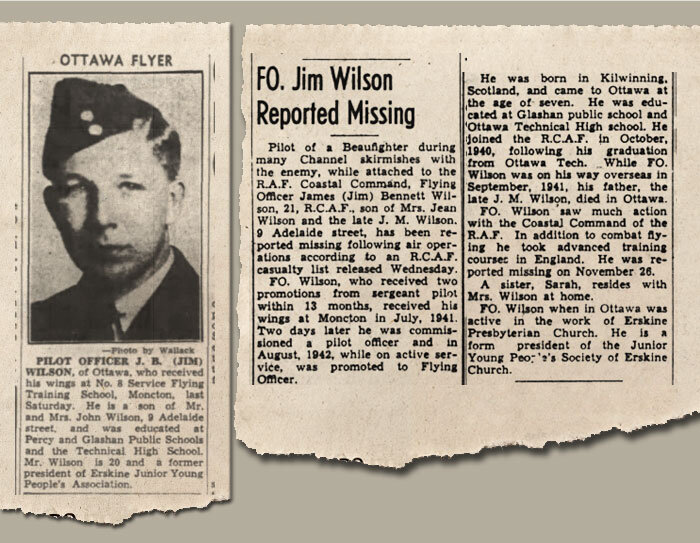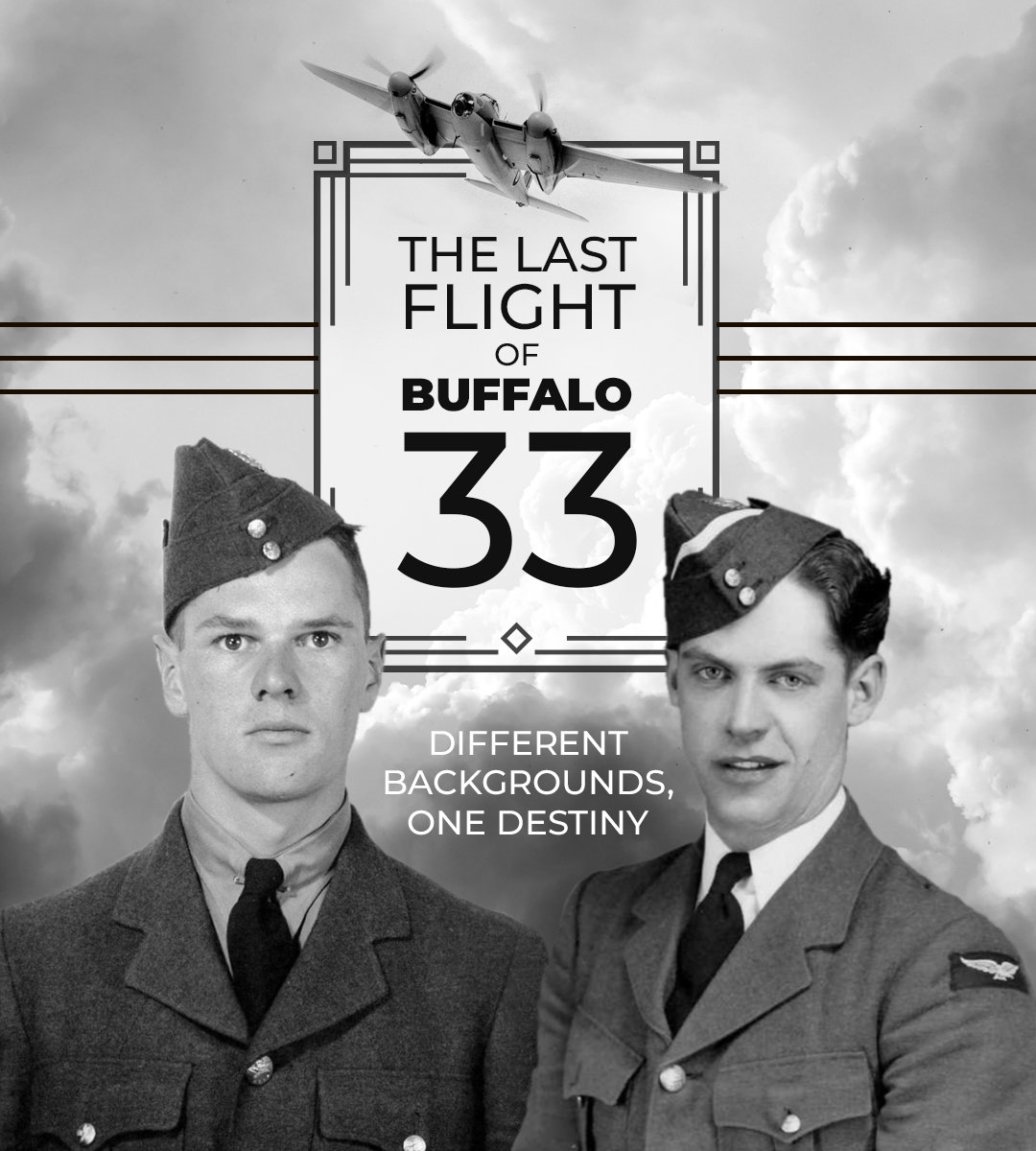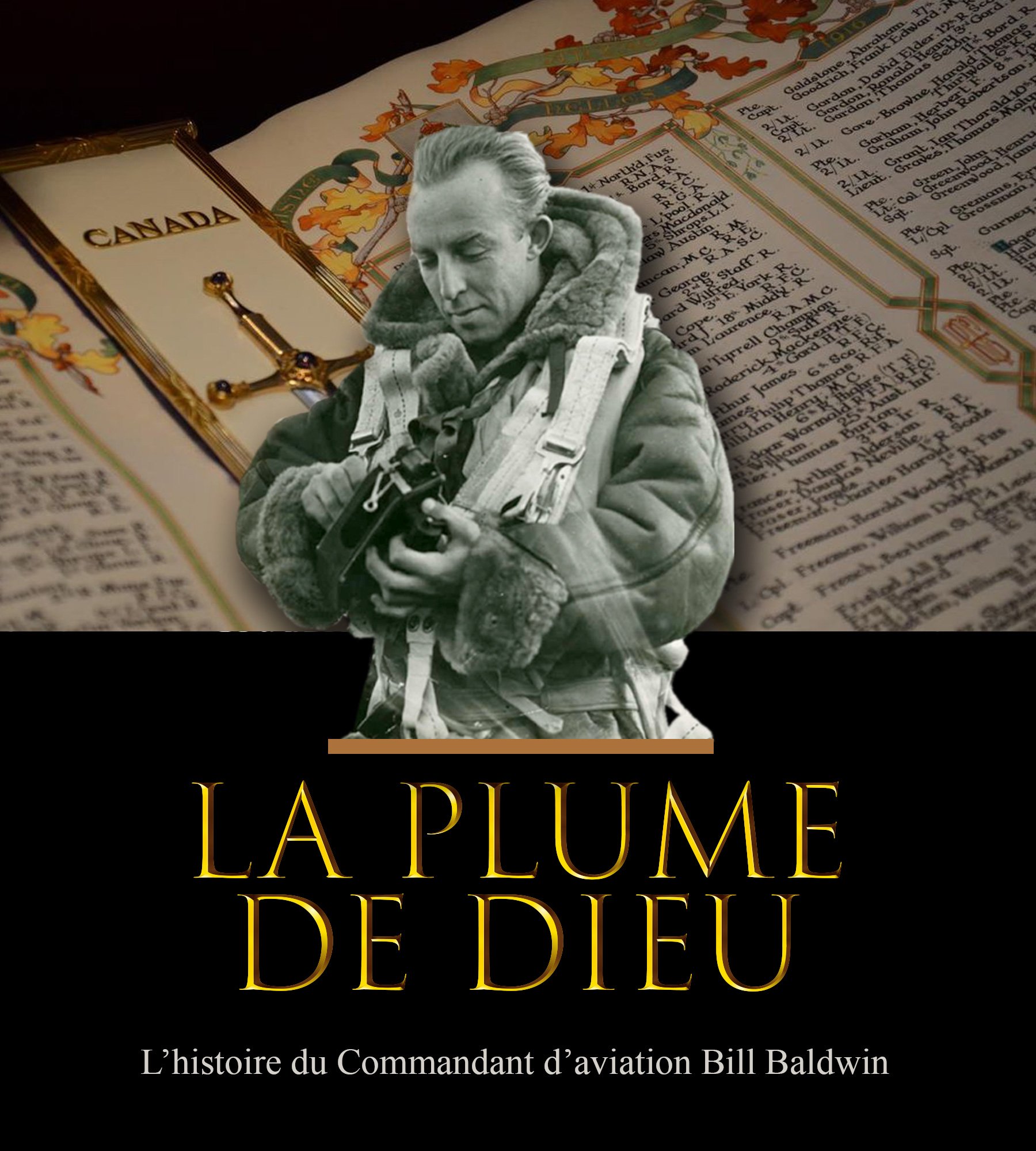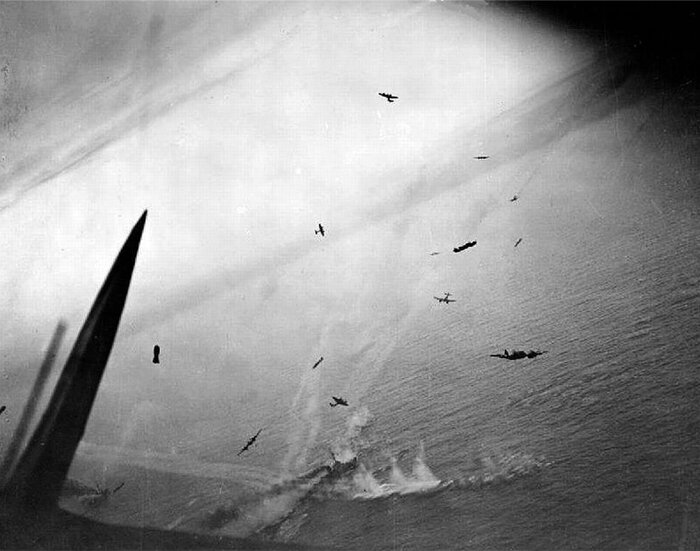GHOST IN THE HOUSE
Conversations are unpredictable things; the thread of an idea or premise of a joke can veer off a path and take us somewhere completely unexpected. A few months ago, a silly joke at our dinner table spun off into the blue that way, and ended up being a more vivid history lesson for me and my family than any lecture, TV show or museum could ever offer.
As usual, I was teasing my daughters, this time trying to playfully frighten them by saying that the 115-year-old house we live in is haunted. Every bang, draft and missing sock had its cause in our resident ghost, I explained to my kids’ long-earned skepticism and rolling eyes. The thought of it piqued my interest though, and later, I decided to look into the history of our home. I had no idea then, that by simply looking for a good premise for a ghost story, my family and I would instead end up getting to know Flying Officer James Bennett Wilson, who grew up in the same house my kids are now growing up in, and who went missing in action flying a Royal Air Force Bristol Beaufighter over the North Sea in November of 1942.
As you would expect, I started off on my quest for information online, typing in our address and perusing anything that might come up. At first I found a funny 1897 story about local boys being arrested for skinny dipping in the nearby Rideau Canal, along with some potential ghost-story fodder about an elderly resident—Mrs. Margaret Walsh—passing away in our front room in 1924. I also came across this very complimentary 1941 obituary of a Mr. John Maider Wilson:
The author found this short but very glowing obituary for Scotsman John Maider Wilson who lived in his home before and during the Second World War. It was clear he was much loved and highly respected with floral arrangements being sent by colleagues and the “boys of Adelaide Street”. He seems to have died suddenly, perhaps a heart attack, on 22 August 1941. Clipping—Ottawa Journal
He sounded like a highly admired man in the community, and I decided to search variations of his name, combined with our street or neighbourhood name to see if I could learn a bit more about him. Almost immediately I came across a January 1943 Ottawa Journal article about his son, Jim Wilson:
The author discovered two poignant Ottawa Journal newspaper clippings during his research—one announcing his commission and the awarding of his RCAF wings on 27 July 1941; the other announcing his death on 26 November 1942, while on operations with the RAF’s Coastal Command. Reading the death notice, we learn that he was on a troopship bound for England when his father died suddenly. This of course would not be the kind of news he was expecting when he landed in Great Britain. His mother, Jean, would lose her husband and son within 15 months of each other. Clippings—Ottawa Journal
The article stopped me in my tracks. I read it, and re-read it, thinking about what it had meant to the Wilson family…unexpectedly losing not just their husband/father, but their son/brother to war, all within one awful year. I tried to imagine James, as a boy, walking to school from our house, the family going to church over on Bronson Avenue, the high school in Centretown, the grocery store on Bank Street, and then what….? Enlisting in the RCAF and off away somewhere to learn to fly?… A troop ship over the Atlantic?… Then, a telegram about his father…Flying missions – where? What was his short life like?
It’s hard to describe all the feelings this old news clipping evoked in me; sadness and admiration, most clearly, but I also felt as if I’d been given a responsibility to learn what I could about the young lost pilot who grew up on Adelaide Street—to teach my children and to pass his story along.
Adelaide Street today is a pleasant, leafy, one block-long street in Ottawa’s Glebe neighbourhood. Like a lot of older residential areas, the Glebe has gentrified over the years and now has its fair share of coffee shops, bistros, and artisanal whatsits, but the imprint of what it was for many years can still be found in the busy schools, low brick apartments, halfway houses, corner stores and student residences scattered among the renovated (and not so renovated) family homes. In the 1930s and 40s, much of the Glebe was middle class, but the south Glebe neighbourhood around Adelaide Street was decidedly working class with its streets full of “free range” children from the large families that were more common at the time. Then, as now, new Canadians made lives here, most commonly arriving from the British Isles or Eastern Europe. The Wilson family was one of these families.
In 1927, John and Jean Wilson, along with their young son James and daughter Sarah, left the ancient Scottish town of Kilwinning to make a new life for themselves in the Dominion of Canada. Like many newcomers, they kept connections with the old country, which, for Scots in Canada, wasn’t very difficult. They attended the Erskine Presbyterian church on Bronson Avenue, and were part of the “Clan Cameron” lodge. As the son of immigrants myself, I laugh to think of the young James and Sarah in the local schoolyards; first with their heavy Scottish accents, then, over time, sounding more and more like their Ottawa-born schoolmates until it was just the odd word or inflection that let on….at least, that was, until friends came by after school and heard Mum and Dad!
Related Stories
Click on image
As is still the case for neighbourhood kids today, James (who went by Jim) went to Glashan middle school, and subsequently chose to attend Ottawa Technical High school. In many ways, it seemed that growing up then was much as it still is, and life on Adelaide Street probably had much of the same family rhythm we see in it today. Out of school, Jim was an avid baseball and rugby player, and enjoyed building model aircraft in his free time. This all seems so familiar and normal, but the tranquil similarity with life today ended in September 1939, when France, Britain, and the Commonwealth Dominions committed to war with Nazi Germany. While Jim was finishing high school, the news from Europe told of the fall of France, the humiliating yet courageous British evacuation at Dunkirk, and what must have seemed like endless German victories. By October of 1940, airmen from Great Britain, the Commonwealth and other countries fought alone against the Nazis—their sole victory being the aerial defense of the British Isles from German invasion—a campaign now remembered as The Battle of Britain. On 16 October, a 19-year-old Jim Wilson walked into the Rideau Street enlistment office and joined the Royal Canadian Air Force.
From that Rideau Street office, things moved very quickly. Canada was at war and airmen were desperately needed. Jim, with his technical school training, interest in aircraft, good health and a character reference from his minister, fit the bill for a potential RCAF pilot. By February of 1941, after completing basic military training in Toronto, Jim found himself at the controls of a Fleet Finch aircraft at Cap de le Madeleine, Québec, then, from May, on to advanced training in twin-engine Avro Ansons, at No. 8 Service Flying Training School in Moncton, New Brunswick.
The Avro Anson Mk II was the mainstay of multi-engine Service Flying Training in the British Commonwealth Air Training Plan, used as well in navigation, bomb-aiming and radio operation training. Two other twins were utilized—the Airspeed Oxford and the Cessna Crane—but “Faithful Annie” did the bulk of the work. Anson 7521, seen here, served with No. 4 Bombing and Gunnery School at Fingal, Ontario near the shores of Lake Erie. Jim Wilson learned to fly the Avro Anson at Moncton, New Brunswick in anticipation of multi-engine combat operations. For most young pilots who earned their wings on twins, Bomber Command lay ahead. Wilson would have considered himself fortunate to go on to twin-engine fighter operations on the Bristol Blenheim and then the mighty and formidable Bristol Beaufighter—the “Beau”. Photo via Bomber Command Museum of Canada
A detail from the Course 27 graduation photo at No. 8 SFTS in Moncton, New Brunswick. In a ghostly twist of fate, Robert Benjamin Moulton of Brockville, Ontario is seen in the lower left. Moulton's death in a Wellington crash in Holland would inspire Dutchman Jay Pinto to create the Gramophone Project, a memorial tribute to Canadian airmen, in which the author is taking part on Remembrance Day, 2015. Photo via rcafmoncton.blogspot.ca
Training was intense, and accidents among the inexperienced pilots were common, but Jim successfully graduated in July 1941 and by August embarked from Halifax with convoy TC 12B (TC — for Troop Convoy). It must have been quite a sight to see; the convoy included the ocean liners Stratheden (P&O), RMS Empress of Russia (CP) and QSMV Dominion Monarch, and was escorted by destroyers HMCS Annapolis and HMS Richmond, with more warships joining the fast moving convoy mid-Atlantic (HMCS Assiniboine, HMCS Saguenay, HMCS St. Laurent, HMS Harvester, HMS Havelock, HMS Ripley). At the time, the Battle of the Atlantic was well underway, with German U-boats sinking Allied ships in attempt to starve the British Isle of food, men and war supplies. It must have been a huge relief to the men crowded into those troopships when they arrived safely in Clyde, Scotland on 7 September. For Jim, it would have been a strange feeling to return, as a Canadian airman, to the Celtic land of his birth. I like to imagine his buddies teasing him and having him “translate”, for them, the heavy brogue of the old country. At the same time, I hope he would have had a little free time to see Scotland and reflect on his ancestry.
Jim Wilson had the good fortune of travelling to Great Britain in a Troop Convoy, a specialized convoy of three fast-moving ocean liners and escorted by fast and powerfully armed destroyers from the Royal Canadian Navy and the Royal Navy. There were no other cargo ships or tankers to slow them down and make them sitting ducks. The three troop ships were Stratheden of P&O Line (top left), the relatively new QSMV Dominion Monarch (top right) of the Shaw, Saville and Albion Line and Canadian Pacific’s RMS Empress of Russia, the grand old lady of the trans-Pacific routes.
Once in Britain, Jim had a couple of weeks to get oriented and then he was posted on 22 September to No. 3 School of General Reconnaissance at RAF Squires Gate for maritime reconnaissance training on the Avro Anson. On 9 December, he was posted to 143 Squadron RAF, a Bristol Blenheim unit, where he spent two months before being posted to No. 2 (Coastal) Operational Training Unit at RAF Catfoss, where, having been a pilot for less than a year, he began training in the formidable Bristol Beaufighter. The “Beau” was a 2800hp twin-engine heavy fighter-bomber often used for anti-shipping and coastal attacks. It was well-suited for this role, as it could carry a good load of bombs, as well as possessing six machine guns and four 20mm cannons. Difficult low-level maritime navigation was facilitated in the Beau by carrying a crew of two – a navigator/radar operator (some flew as night fighters) being seated behind the pilot. At an age when I thought that flying a 160hp Cessna was pretty great, and my worries generally revolved around girlfriends or my middling results in second-year calculus, Jim Wilson was mastering flying a powerful attack aircraft at 300mph, skimming the North Sea waves in the dreadful coastal weather of a north Yorkshire winter. He was good at it, too! His instructors wrote that he was an above-average pilot, particularly at aerobatics and formation-flying. They also wrote how well-liked he was and that he had a cheerful, “happy-go-lucky” manner—but felt, however, that this, often boyish, manner might exclude him from promotion. I hope that, unofficially at least, the instructors and commanding officers in those hectic, dangerous years realized what men all those boys really were.
On 22 May 1942, eighteen months after walking into the Ottawa recruiting office, and after a short 3-week posting to 236 Squadron, 21-year-old RCAF Pilot Officer James Bennett Wilson was posted to 235 squadron, RAF Coastal Command, Chivenor, England. His squadron was tasked with destroying enemy shipping, allied convoy protection, and raid/reconnaissance missions over Nazi-occupied coasts. Reading the squadron operations records from the UK National Archives, I had the immediate sense of how dangerous these missions were…
22.8.42 “Interceptor patrol by Sgt. Payne and P/O Wilson in a/c W. FW190 sighted at 200yds flying due west. Opened fire at 300yds, closing to 150yds. Hits seen on wing roots and fuselage. Visibility reduced to 50yds and enemy disappeared in rain towards the Ushant.”
Shortly after this patrol, Jim, despite his instructor’s comments about his boyish demeanor, was promoted to Flying Officer, and he was clearly very proud. I read a letter from the RCAF to his mother announcing his promotion after he specifically requested that she be informed. What mix of worry and pride would Jean Wilson have felt on reading…“The enclosed Officer’s Commission Script represents the authority vested in your son as well as the trust placed in him by His Majesty, The King.”? Jean submitted this article to the Ottawa Journal to announce the good news.
A Bristol Beaufighter of 235 Squadron (Squadron code LA) warms up at RAF Chivenor. Photo: Imperial War Museum
However, with experience and promotion came responsibility, and Jim’s missions grew progressively more daring.
6.9.42 “Interceptor patrols by P/O Caroon in D, F/O Wilson in K”….“K sighted four Ar.196, flying in two pairs, the first at 400ft. K attacked the first pair, damaging the port wing on one Arado. The second pair dived on K, and was joined by a third pair, previously unnoticed. All Arados then climbed into the cloud, followed by K, but nothing further was seen of them.”
A Bristol Type 156 Beaufighter of Coastal Command. It is clear in this photo why some wags called the magnificent aircraft “a fuselage in hot pursuit of two engines”. The Beaufighter was a versatile aircraft used in service initially as a night fighter, and later mainly in the maritime strike and ground attack roles; it also replaced the earlier Bristol Beaufort as a torpedo bomber.
Beaufighter pilots of Coastal Command hammer the German mine-detecting ship Sauerland later in the war. This image shows just how low the Beau pilots took their attack. Photo: Imperial War Museum
Looking at this photograph, one sees just how dangerous the Beaufighter operations were—for the target ship and for the attacking crews, who risked mid-air collisions operating in close proximity with each other. Photo: Imperial War Museum
Bristol Beaufighters were the bane of any German ship’s crew that dared to conduct operations on the North Sea. The splashes show the fire power of attacking RCAF Beaufighters as they walk their cannons up to the target. Photo: Imperial War Museum
10.11.42 “Ship Strike”… “F/O Wilson, Sgt. Cooke in H.”…“10/10 cloud rain vis 400yds”…“Formation spotted 3 enemy ships escorted by two E-boats heading 225degrees. A/c O made shallow dive from 300’ on port beam, a/c A made steep dive on starboard quarter, each releasing 2 x 250lb bombs, a/c H made two runs over target but broke away owing to intense flak and bad visibility.”
And note the altitudes in this next report...!
24.11.42 “Strike”…. “F/O Wilson, Sgt. Cooke in S.”…“Formation made landfall at Guilvenic and attacked land targets. A/c S selected a railway building alongside a military camp and dropped 2x250lb bombs from 30ft. One bomb bounced 10ft in the air before bursting. A/c A selected gun emplacement and crew were seen to take cover as a/c approached at 30ft. Results of attacks were obscured by smoke and dust of bomb bursts. Low level and speed of a/c further prevented accurate observation.”
And then, less than two weeks before his 22nd birthday, on what seemed like a routine mission….
27.11.42 “Fishery Patrol” “F/O Wilson and Sgt Cooke in a/c E, F/Lt.Casparius and F/Sgt. Davies in a/c O. A/C in formation on patrol in accordance with briefing by Naval Officer. Both a/c failed to return.”
The telegram from the RCAF delivered to Jean Wilson (though addressed to her now-deceased husband—likely because his name was on record) just one day after her son failed to return from a routine patrol. Note that the date, the 28th, was scratched out and corrected to the 26th, whereas the 235 Squadron ORBs indicated that the operation was on the 27th. Regardless of inconsistencies in the bookkeeping, Jim Wilson, the young lad from Adelaide Street, had died. Scan of telegram via Library and Archives Canada
Who knows what happened that day? Were they shot down? Did they collide? Even without the added dangers of war, formation flying at low-level and in poor weather is a risky task. Whatever the reason, Jim had become one of the three young men who wouldn’t be walking back down Adelaide Street after the war.
And that’s the thing. That really is the heart of the matter for me. As brave and sad as it seems to us today, Jim Wilson’s story is not exceptional. Jim, for all sorts of reasons—youthful excitement, patriotism, a test of his mettle, a sense of duty—went and did what needed to be done. He did it almost anonymously, with no fanfare and very little personal reward for the great risks he took. His mother and sister simply went on, saddened, but also knowing that they weren’t the only families to be grieving, and that they had to do their bit, too.
In researching Jim’s story, I learned that, on my one-block long street alone, at least 10 young people served in the Second World War. One of them, Eddie Friel, was a paratrooper who landed on D-Day, and survived the war to become the base commander at Petawawa. There were also sailors, riflemen, airmen, and the leader of the Ottawa RCAF women’s auxiliary, all of whom were in their twenties. I don’t know what the average was for other Canadian neighbourhoods, but for me, the very thought of ten young people from any given street stepping up like that when it was really needed, is hard to fathom. I feel that we must remember it.
James Wilson is officially commemorated today, along with 20,000 other lost airmen of the British Commonwealth, who have no known graves, at the Air Forces Memorial at Runnymede, England. His name is also on page 125 of the Canadian Book of Remembrance, in the Memorial chamber of Parliament’s Peace Tower in Ottawa. Earlier this year, I received a photographic copy of that page, along with a kind letter from who was then the book’s official custodian, Parliamentary Sergeant at Arms, Kevin Vickers. (The man who took down the lone gun-toting terrorist in the Parliament buildings in October of 2014.) He informed me that page 125 is displayed in Parliament every year on March 16. That day next March, I’m going to take my kids to see that page on display, and we will remember Jim Wilson, and all the other kids who grew up on our street.
Peter Rudin-Brown
The page on the Canadian Book of Remembrance, Page 125 — remembering 21-year-old James Bennett Wilson of Adelaide Street, Ottawa.
The former Wilson family home on Adelaide Street in Ottawa, now the home of author Peter Rudin-Brown and his family. The house received a third storey sometime in the 1990s. Adelaide Street, only one city block long, is a decidedly unassuming street with a strong identity, many young families and a reputation for neighbourliness and great fun. Photo: Peter Rudin-Brown
Jean Wilson lived to be a 100 years. It is likely that she thought of her beautiful son Jim every day for the last 56 years of her life. Photo: Peter Rudin-Brown
Adelaide Street youth who answered the call
5 Adelaide
H.F. Graham
Women’s Division RCAF, district B
9 Adelaide
Flying Officer James (Jim) Bennett Wilson
235 Squadron, Coastal Command, RAF
Missing in air operation over the English Channel
November 1942
15 Adelaide
Lieutenant Commander Joseph Mclean
Royal Canadian Navy
21 Adelaide
W.O.2 Harold Arthur Healy
207 Squadron, RAF
Missing in air operations—9 April 1943
23 ½ Adelaide
Chief Shipmate Jack Thompson
25 Adelaide
Kenneth Mittelstadt
Wireless Operator RCAF
32 Adelaide
Captain Eddie Friel
Paratroop commander at D-Day
35 Adelaide
W.O. Kenneth Lyle Dale
son of Bill and Lilly Dale, age 21
249 Squadron, RAF
Missing in air operations, North Africa
November 1944
36 Adelaide
W.O.1 J.E. Mason
Air gunner, RCAF
43 Adelaide
Pvt. D.C. Troke






















